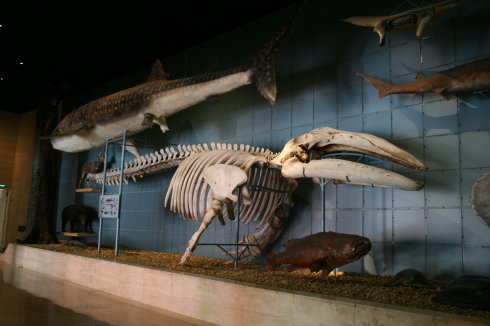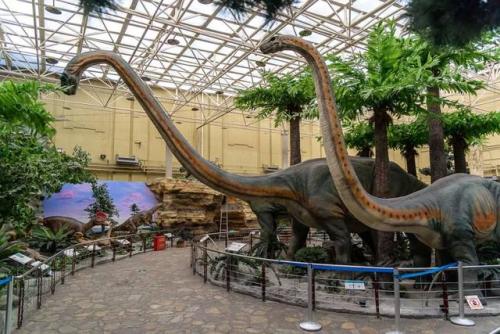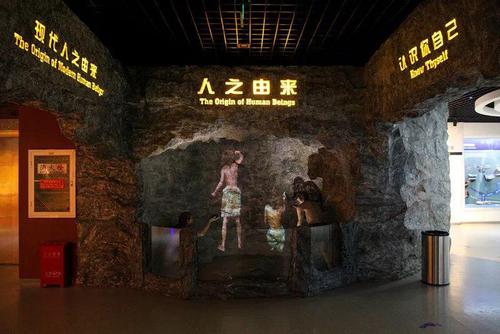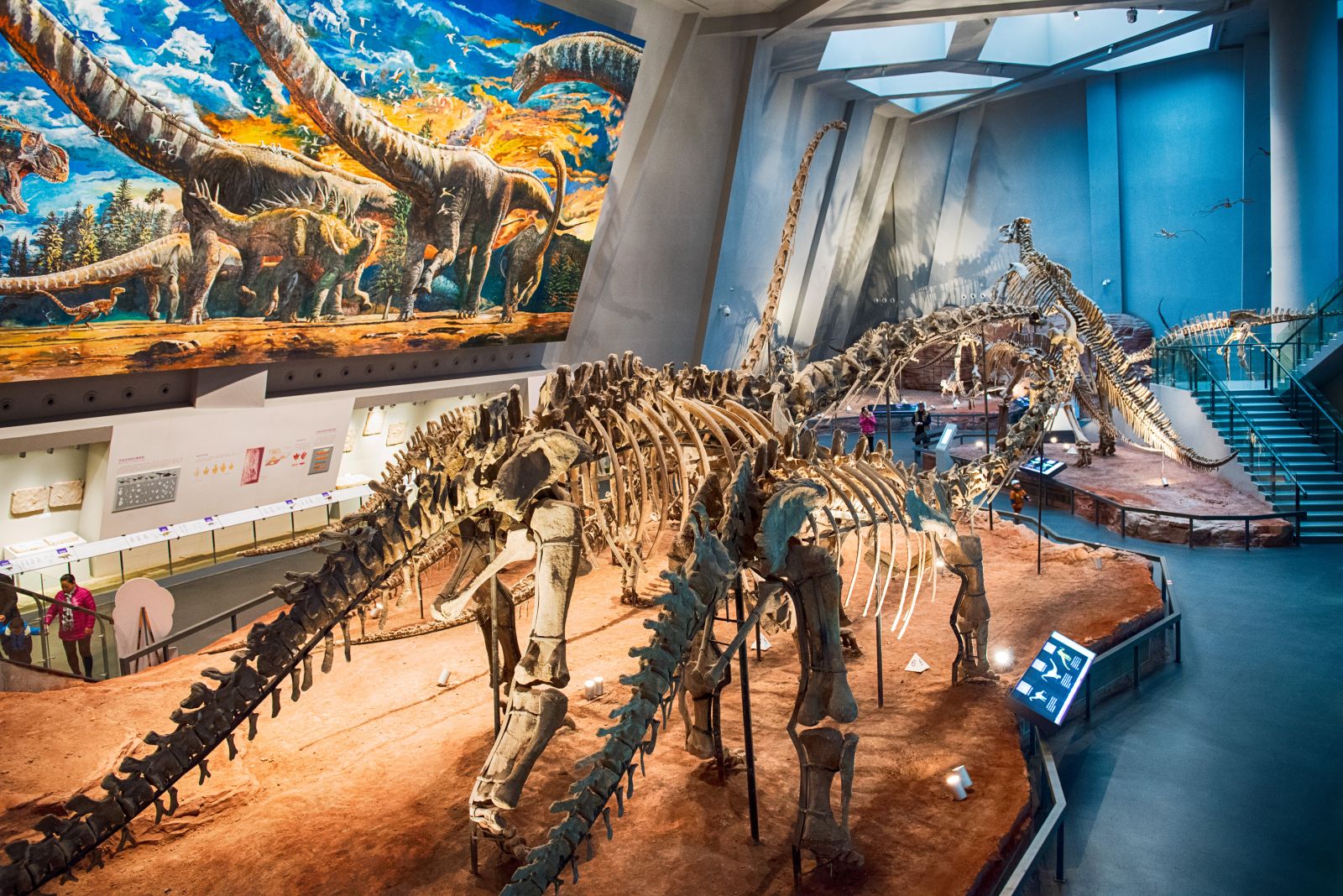Chinese Name: 北京自然博物馆 Pronunciation: Běijīng Zìrán Bówùguǎn
Building Time: 1958
Best Visiting Season: All the year
Recommended Time for Visit: 2-3 Hours
Occupied Area: About 15,000 square meters
Address: No.126, Tianqiao South Street, Dongcheng Strict, Beijing, China
Building Function: Sample collection, scientific research, and science and peace education.
1. Visitors should make an appointment on the WeChat official account “Beijing Museum of Natural History” in advance.
2. There is a charge for some temporary exhibitions.
Opening Hours: 9:00-17:00 (No admission after 16:00)
Monday Closed (Except for statutory holidays)
The Beijing Museum of Natural History is a large-scale natural history museum with a collection of more than 320,000 pieces of cultural relics, fossils, and specimens. Covering a floor space of 21,000 square meters, with an exhibition area of more than 10,000 square meters, the museum has four basic display exhibition halls and one dinosaur world hall.

The collection of large-scale overall ancient mammal fossils ranks second in the world, and the Yellow River ancient elephant fossils and dinosaur fossils are famous at home and abroad.
It is located at the Tianqiao area on the central axis of Southern Beijing, backed by the World Cultural Heritage Temple of Heaven Park, facing the modern Tianqiao Theater, and boasting a special cultural environment.
The number of large fossils in the collection is listed top two in the world. It has been the most popular natural history museum in China.
There is not only an exhibition hall but also a specimen building named “Tian Jiabing Building” which was jointly invested and supported by the Hong Kong industrialist Mr. Tian Jiabing and the Beijing Municipal People’s Government. It contains more than 321,829 specimens in the collection, with a total area of 3,600 square meters.
In 1962, the Beijing Museum of Natural History was formally named.
In 1980, the museum started publishing the professional academic journal Research Report of the Beijing Museum of Natural History and the popular science magazine China Nature.
In 1985, it was affiliated with the Beijing Academy of Science and Technology.
In May 2008, the museum was rated as one of the 79 national first-class museums by the State Administration of Cultural Relics.
Since July 1, 2008, the museum has been officially opened to the public for free.
In September 2016, the Beijing Museum of Natural History was selected into the first batch of Chinese architectural heritage in the 20th century.

After more than one year of preparation and half a year of construction and renovation, the exhibition Prosperity of Invertebrates met the audience again on February 10, 2015.
It focuses on the formation of fossils, the origin of life, the Cambrian explosion, the prosperity of invertebrates, and other major historical events.
The exhibition clearly shows the evolution of life from prokaryotes to eukaryotes and from unicellular protozoa to multicellular metazoans, and after a diploblastic phase and a triploblastic phase, finally to the origin of vertebrates.

The permanent exhibition Dinosaur Park was reopened to the public in the summer of 2013.
In addition to the traditional movements such as shaking head and tail, baring teeth and claws, roaring and neighing, the museum adds the details of dinosaur blinking and panting, which is more lifelike.
Here, visitors can see many realistic models of dinosaurs. Just put into it a coin, and the dragon will lay an egg for you to take away.

The exhibition Plant World is one of the four classic permanent exhibitions retained by the Beijing Museum of Natural History since it was opened to the public in 1958.
There are three halls-- “The Evolution of Plant”, “The Diversification and Adaptation of Angiosperms”, and “The Plants and Humans Beings”.
It is located on the second floor of the north wing of the exhibition building. It covers an area of more than 800 square meters. It includes three parts of land plant evolution, plant function, and modern plant landscape.

The exhibition--the Origin of Human Beings was opened on October 22, 2015. It has aroused great repercussions at home and abroad and is deeply loved by the audience.
The latest discoveries and research results of Paleoanthropology have been added into the content, and many new specimens have appeared in the exhibition as well.
This exhibition explains the two most-concerned questions more clearly: “Who are we?” and “Where are we from?” The exhibition is divided into two halls: “Know Yourself” and “The Origin of Modern Human Beings”.
1. The guided tour service is temporarily suspended.
2. Visitors should wear facial masks and keep a distance of more than 1.5 meters from others in the museum.
3. Online booking should be made at least one day in advance before visiting. The ticket system is updated at 11:00 a.m. every day, and tickets can be reserved for three days. One certificate can only be booked for one person, and each ID card number can only be used once a day.
4. Visiting time: 9:00-13:00 and 13:00-17:00. Visitors who fail to visit will be regarded as giving up the opportunity and will be required to make another appointment.
5. Visitors are required to complete temperature detection, personal information scanning registration, and other travel checks at the entrance, and show ID cards or passports to verify the booking information before entering.
6. Visitors should enjoy the exhibitions in an orderly and civilized manner.
Take bus 7, 20, 35, 110, 120, 622, 93, 2, 106, 120, and get off at Tianqiao Station.
Take bus 20, 53, 36, 71, 90 and get off at Tiantan Ximen Station.
Take bus 6, 34 and get off at East Tianqiao Intersection Station. And then walk for about 120 meters along Tiantan Road, turn left, walk about 350 meters along the Tianqiaonan Dajie(South Tianqiao St.) to the Beijing Museum of Natural History.
Take Metro Line 8 (south section), get off at Tianqiao Station, and exit C. Then walk northward for 60 meters, turn left, walk about 50 meters, turn right into Tianqiaonan Dajie(South Tianqiao St.), walk 70 meters to the destination.
Chinese: 请带我去北京自然博物馆。 English: Please take me to the Beijing Museum of Natural History.
If you go to the Beijing Museum of Natural History from Beijing city center (Grand Hyatt), it takes about 20 minutes (about 30 yuan).
If you go to the Beijing Museum of Natural History from Beijing Daxing International Airport, it takes about 50 minutes (about 170 yuan).
If you go to the Beijing Museum of Natural History from Beijing Capital International Airport, it takes about 60 minutes (about 130 yuan).
If you go to the Beijing Museum of Natural History from Beijing West Train Station, it takes about 15 minutes (about 35 yuan).
If you go to the Beijing Museum of Natural History from Beijing South Train Station, it takes about 10 minutes (about 20 yuan).
